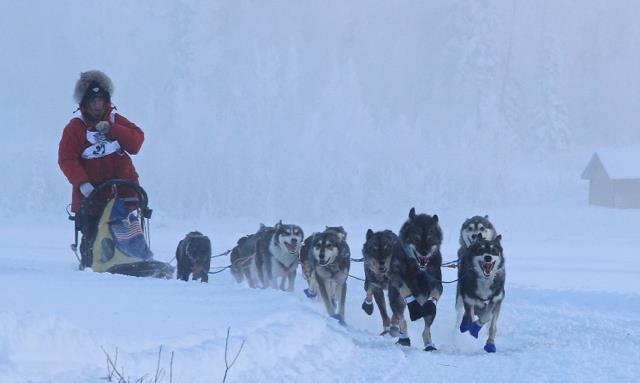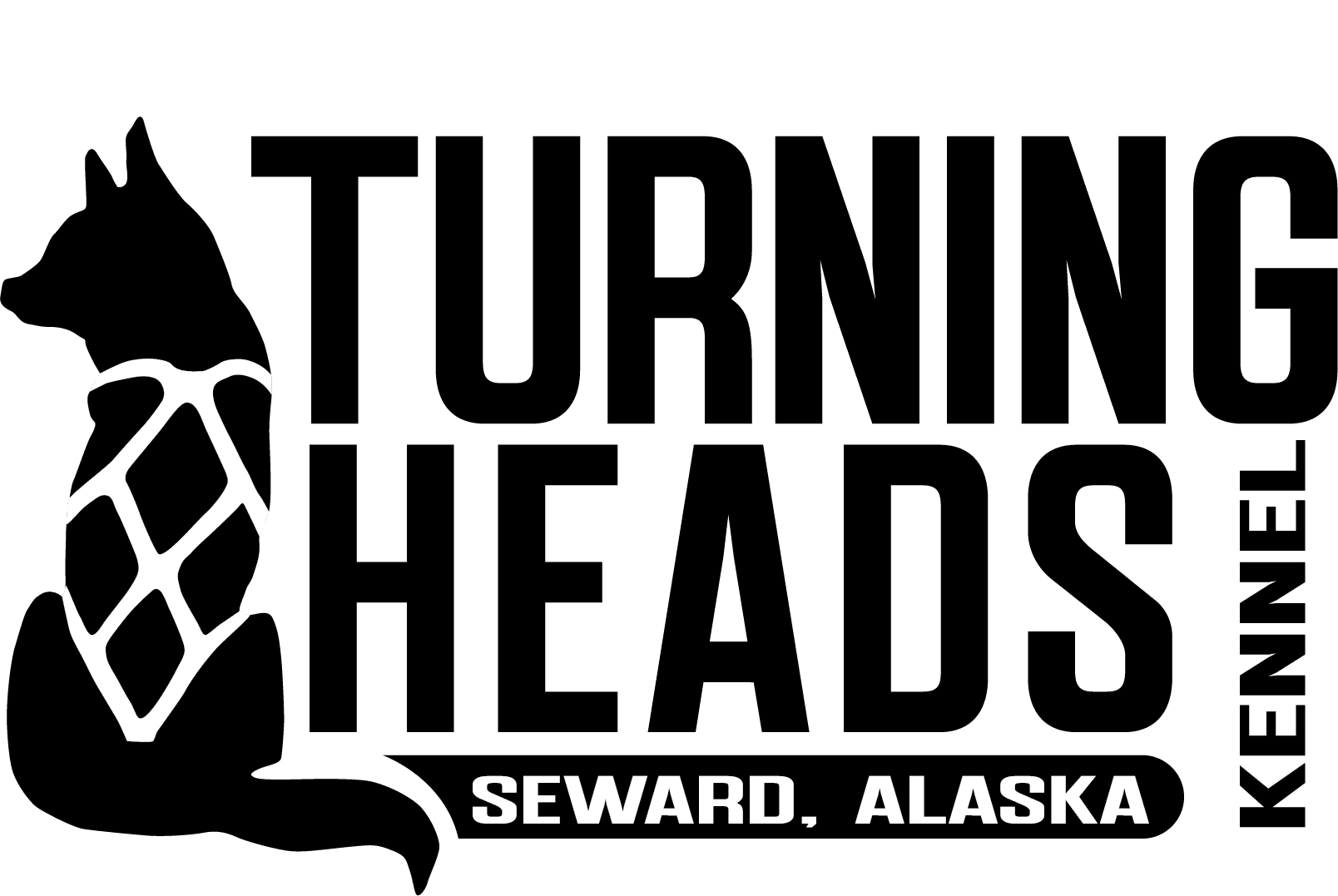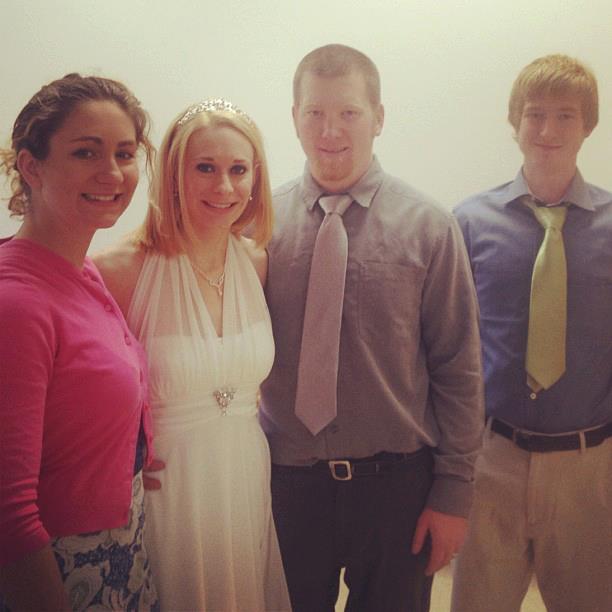This past weekend instead of doing the Sheep Mountain 150 Sled Dog Race which, unfortunately, was cancelled due to lack of snow, Travis took part in the two day Alaska Excursions Race. The Alaska Excursions race is typically a two day event where teams run 60 miles one day and then sixty miles the next. It is set up more as a sprint race than a distance race — in other words, you get to sleep in a warm bed at night. This year, however, due to lack of snow the mushers ran 40 miles each day instead of the 60 they usually do.
Travis took 7th place — something we are tremendously happy with in a sprint type race. So why was Travis running a sprint race? After all, we are a distance kennel! The answer is simple: experience. In fact 6 of the 27 participants will be running in Iditarod 2013 — with half of them finishing in the top 10.

© 2012 Husky Productions/Donna Quante
So lets break down the race results. First, conditions were hard and fast, allowing teams to really step up in the speed department. There hasn’t been a whole lot of snow so this wasn’t a real surprise. The first day of the event, Travis started in 29th placed and worked his way up to a 9th place finish. Passing teams takes time and can hinder teams in shorter events like this. Fortunately, our dogs passed like champs. Unfortunately, no matter how well our dogs pass, it is important that both teams involved in the pass do well. Travis didn’t have too many problems with other teams, but did mention their were a few “alligators” in the other teams. Alligators are exactly what they sound like — dogs that try to bite other dogs while they pass.
Travis’ total time on the first day of the race was 3 hours 23 minutes and 18.00 seconds. The leader, Ryan Redington, finished in 2:49:29.00 — almost exactly a half hour ahead of Travis. With 2nd place through 6th place finishing in 2:55:49.00 through 3:04:43.00. The 7th place finishing team on day 1 (Jeff King) came in almost 15 minutes behind the 6th place finishing team (Robert Redington). Why the huge gap? Well, this reflects a difference in how these dog teams were run in comparison to the rest of the dog teams.
The first six teams are known for and train for speed. The top 3 racer — Ryan Redington, James Wheeler, and Ariane Jasmin — are not running Iditarod. This is important because it ultimately means that they are training differently. You don’t train for the 100 meter dash the same way you train for a 5K and you don’t train for a 5k the same way you train for a marathon. These guys are focused on speedy teams that will excel in short events like the Alaska Excursions race. As an Iditarod kennel, this was not Travis’ focus. In fact, Travis was (and I even more so) hesitant about doing this event due to how different it is from something like Iditarod. Ultimately, we do things like this for experience and for fun — not everything is about winning — at least, not all the time — but you do have to keep the bigger picture in mind.
© 2012 Husky Productions / Donna Quante
The fourth place team on day 1 was driven by Cim Smyth (6:04:35) and the fifth place team driven by Wade Marrs (6:07:02), are. Smyth and Marrs are both distance mushers, who are known for speed. They excel in the mid-distance circuit because their dogs are good at shorter races where their speed is an asset. Smyth won the Tustumena 200 last year. Smyth’s fast times in the mid-distance circuit, however, have yet to translate into true Iditarod success. Speed in Iditarod is actually less important then one might think. The important thing for an Iditarod team is the ability to keep moving and to stay in peak condition. Speed deteriorates a dog. It’s tougher on their joints and generally teams traveling faster (especially at the beginning of the race) require more time to heal up. Smyth’s best finish in Iditarod was in 2009 when he finished in 5th. In his last three Iditarods Smyth has finished 24th (2012), 21st (2011), and 23rd (2010). Marrs has been less active in the racing circuit but maintains a very competitive, fast team. He and Travis are good friends and Travis has been training out of his yard recently. Wade has a team to watch out for in Iditarod 2013.
The next group of distance mushers were about 15 minutes behind the top six racers — the next distance mushers to finish were Jeff King (3:20:32.00), Ken Anderson(3:23:01.00), and Travis (3:23:18.00). King is an iconic name in dog racing. Having won four Iditarods, King certainly knows what he is doing. He scratched from the 2012 Iditarod due to sick dogs. King did not race in 2011. He has finished in the top ten of Iditarod 17 out of his 19 races, including 4 first place finishes, 2 second place finishes, and 6 thirds place finishes. To say King is an impressive dog musher is an understatement.
Ken Andersen, although he has never won Iditarod, still has an impressive record. Andersen finished 12th in the 2012 Iditarod and has finished in the top 10 four times out of the last six years. He has finished in the top 20 for the last ten years. Andersen is consistent and consistency is the mark of a good athlete in any sport.
© 2012 Husky Productions/ Donna Quante
Day one of the event Travis had a few problems. One of his dogs also wasn’t at a 100% due to the training she had done prior to the race so Travis was forced to take it easy. Another dog simply wasn’t up for the faster paces this race required. The good thing about this event was it meant that on day 2 he wouldn’t have to take her.Overall, he was happy with how he finished on day one.
Photo Courtesy of the Anchorage Daily News
Travis approached day two realistically. “I want to catch Ken,” he told me. At the time, he didn’t think he could catch King. Two minutes, even over 40 miles, can be a considerable amount of time to make up. We discussed his line up and he made a few changes. He dropped two dogs who weren’t up to the faster pace of the race — most of our dogs are slow and steady. Some distance mushers drive fast, speedy times with short runs and long rests (like Smyth or Marrs). Not us. We run tortoises. We go slow and steady. We run further distances at slower paces but our dogs need less recovery time then dogs that run fast and short. If you sprint five miles you are going to need a longer rest then if you jog or walk ten — that’s all it comes down to. So we weren’t surprised. But that doesn’t mean we don’t have speed. Travis brought in a new leader (Madori) and she was excited to be out on the trail.
In a two day event like this, where you go home at the end of the night, one of the true measures of how you have run your dogs is your performance on day two. Always finish stronger than you started. That’s one of the things Travis and I have both taken away from working with various mushers. Build the dogs, don’t tear them down. What was really cool about Travis’ performance on the second day was how much they improved. His finishing time on the second day was 3 hours 8 minutes and 4 seconds. He did the same course only this time he finished almost 15 minutes faster. Wow.
The differences can be attributed to several things — dropping the dogs (Monroe & Mary) and replacing them with others helped. Madori, who was added on day two is a speed demon but had to learn how to pass during the race so while she brought speed she also had to do some learning while she was out there. Madori (mother to Bonnie & Clyde, two of our puppies this summer) loves being up front and is a stellar gee/haw leader. She isn’t the friendliest dog in the kennel like her brother Bud or her sister Zema. She’s shier and keeps to herself when there are strangers in the dog yard — but she’s one heck of a leading lady and when you put her up front you know you’ll have some speed. The faster times can also be attributed to the dogs knowing how long they were going and to pacing themselves. It can also be attributed to the fact that these dogs knew they were racing. They love to pass other teams. “I couldn’t believe how much they’d pick up when we saw another team,” Travis said. “It was like they hit a new gear.”
Travis is kicking to help the team to a faster finish on Day 2 of the two-day event.
Photo Courtesy of the Anchorage Daily News
For Travis, his goal was passing Ken. He knew he could make up 15 seconds. He knew all he needed to do was pass Ken and maintain a bit of distance. He and the dogs were working hard to do so and as they turned a corner and started climbing a hill, they came upon a dog team. Only it wasn’t Ken Andersen. It was Jeff King. “I was so excited,” Travis said. He passed Jeff going up hill — something Travis is truly proud of. Jeff stuck with him for a while. Typically, after you get passed, your dogs perk up and try to keep up with the team but after a while Travis and the team left them behind. They then came upon Ken and passed him too.
“I was really happy to see them do what they did,” Travis said. When Travis got to the finish line, one side of his dog truck had been taken over by Wade. It was the side he was coming from and he had no way to steer the dogs to the other side based on how things were set up. Travis and Wade travelled to the race together to save on gas money . Travis drove the team past the truck, generally considered a difficult thing to do, and then made them break trail and do a turn around so he could hook them off properly. I think he turned some heads.
Zema (Left) and Madori (right) stand with Travis at the finish of the race
Photo Courtesy of Greg Sellentin.
Photos in the post were courtesy of Donna Quante & Husky Productions, The Anchorage Daily News, and Greg Sellentin.

